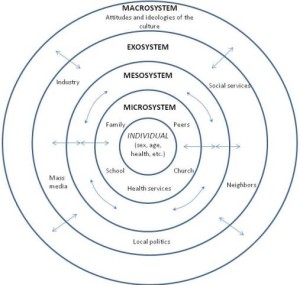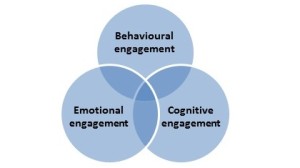My SLA Project
Further to my previous post on the research I am doing to better understand the role of parents and family in their children’s (language) learning journey, I am considering how psycholinguistic approaches may help further address my igniting question. The question in it’s current form is To what extent does parental involvement affect the motivation of students studying a second language?
In search of inspiration I picked up the Handbook of Research on Student Engagement (2012), and read chapter 15 entitled Parental Influences on Achievement Motivation and Student Engagement. I was looking for practical solutions and theoretical explanations to help unite parents in their children’s language learning journey. This work brought a number of relevant theories to my attention, including Bronfenbrenner’s (1977) Ecological Systems theory, Student Engagement theory and Achievement Motivation theory.
Ecological Systems Theory
According to Bronfenbrenner (1994), “in order to understand human development, one must consider the entire ecological system in which growth occurs.” And according to his Ecological Systems theory (1977), that system places the child “at the centre of increasingly distal spheres of influence” – from the family and school to the community and society at large. Here, children are seen, not just as individuals, but as active social participants, within a microsystem, mesosystem, exosystem and macrosystem. Of course, these five layers have differing, and yet continual impact on an individual’s life development over time. Following on from Bronfenbrenner, then, it stands to reason that cultural context plays a role in how parents foster their child’s engagement. In terms of my research project, which is in a language learning context, I am concerned with the social and cultural context of the microsystem (child and parents/family) and mesosystem (child and the wider community), and how differential parental actions may encourage children to develop positive attitudes and behaviours toward achievement.
Student Engagement Theory
Student Engagement involves both behaviours and emotions and encompasses effort and persistence in schoolwork (Bempechat and Shernoff, 2012). As per the image above, student engagement and student motivation overlap: motivation is seen as a psychological construct, whereas engagement is seen as to involve emotions and describes the intensity and duration of an interaction. Fredericks, Blumenfeld, and Paris (2004) describe the overlapping dimensions of student engagement as:
– cognitive engagement (investment in learning, self-regulation)
– behavioural engagement (positive conduct, demonstration of effort)
– emotional engagement (interest and boredom)
Bempechat and Shernoff (2012) make a clear distinction between procedural and substantive engagement. Where procedural engagement is something observable, and therefore open to falsification, substantive engagement relates to deep processing of information coupled with with intrinsic motivation, which research suggests leads to higher levels of academic performance and achievement. When students are deeply engaged with learning they are in a state of flow (Csikszentmihalyi, 1990). Flow theory is defined as, “the simultaneous experience of concentration, interest and enjoyment in the task at hand.” Therefore, as I consider what singular, practical task I may design to link parental involvement to student motivation, I now understand that it ought to be one that absorbs those involved so deeply in the ‘flow’, they do not realise they are at work or study.
Achievement Motivation Theory
Achievement Motivation can be defined as the need for success or the attainment of excellence, where individuals will satisfy their needs through different means, and are driven to succeed for varying reasons both internal and external (Rabideau, 2005). If perceived competence is seen to be a direct predictor of achievement goals (Cury, Elliott, Da Fonseca and Moller, 2006), and how motivated a student is to display competence stems comes not only from within, but also from external influences, then it stands to reason to include family members in the design of an intervention to unite parents and children alike in the language learning process.
My Intervention
For my SLA project – pro-actively supporting parental involvement to increase student motivation, I plan to embody the theories discussed above into the design of an object or task, which, I hope, will not only be academically and theoretically sound, but of practical value, too.
That said, the research will continue in a following post, where I will examine theories of parental involvement, discuss some real-life examples of home-school partnerships and put forward my own list of ideas for said object, on which I hope some readers will comment.
References
Bronfenbrenner, U. (1994). Ecological models of human development. In International Encyclopedia of Education, Vol.3, 2nd. Ed. Oxford: Elsevier. Reprtined in: Gauvain, M. & Cole, M. (Eds.), Readings on the development of children, 2nd Ed. (1993, pp. 37-43). NY: Freeman.
Csikszentmihalyi, Mihaly (1990). Flow: The Psychology of Optimal Experience. New York, NY: Harper and Row.
Cury, F., Elliott, A.J., Da Fonseca, D. and Moller, A.C., (2006), The Social-Cognitive Model of Achievement Motivation and the 2×2 Achievement Goal Framework. Journal of Personality and Social Psychology. Vol 90, No. 4, 666-679.





